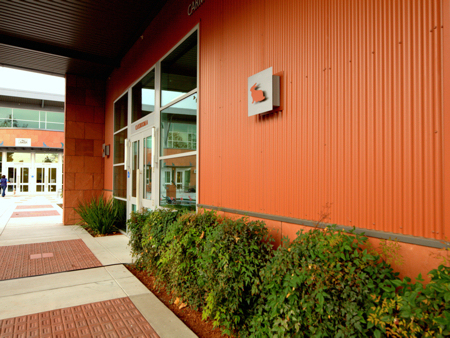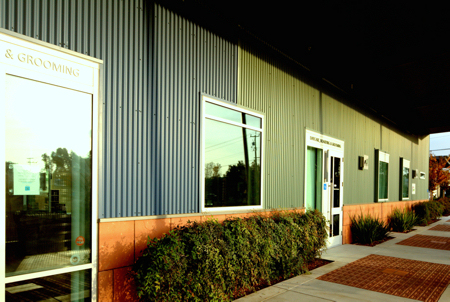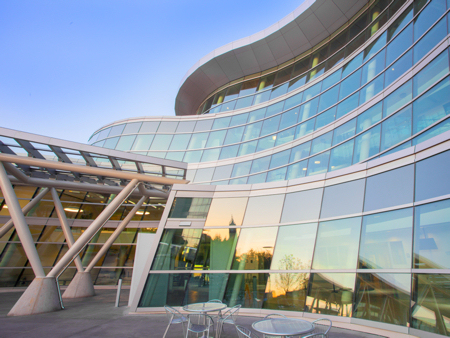 By Jeff Alexander, Valspar Corporation
By Jeff Alexander, Valspar Corporation
Whether it’s better gas mileage that can be reached during a daily commute to work, or a full-scale decrease of carbon emissions by a large corporation, going green and developing sustainable lifestyles and business practices is more important than ever before. Innovations in sustainability have matriculated throughout every industry, including the architectural and construction markets. Every year, new products and business practices are being introduced that conserve energy and limit the carbon footprint of a building – both in the short and long term.

|
The Humane Society of Silicon Valley is one of the nation's first LEED-Gold animal shelters. It is clad with metal panels from Metal Sales, finished with paint coatings from Valspar. |
 |
When it comes to building with coated metal, there are several prominent programs and certifications that provide a blueprint for industry-leading sustainable practices.
LEED® Certification: Divided into Bronze, Silver and Gold Certifications, Leadership in Energy and Environmental Design (LEED) functions as a third-party verification program that inspects every aspect of a building's life cycle to make sure it conforms to the most up-to-date environmental standards. In 2013, LEED v4 was announced as the newest and most extensive LEED program yet, offering a more specialized way for builders to achieve their sustainability goals. To achieve LEED Certification, buildings earn credits based on the architectural products used and overall construction process that promote sustainability and aim to decrease energy consumption. For example, credits can be earned by working with solar reflective architectural coatings applied to metal paneling that can decrease energy costs due to improving the energy efficiency of a building. Furthermore, builders can earn additional credits by using a coating that is composed of recycled materials or manufactured by a company that is transparent about formulations to ensure eco-friendly ingredients.
ENERGY STAR®: A voluntary program created by the U.S. Environmental Protection Agency, ENERGY STAR helps businesses protect the climate and save money by finding ways to use less power and prevent greenhouse gas emissions. The program promotes energy-efficient products and buildings in order to reduce energy consumption, improve energy security, and reduce pollution. Building materials such as solar reflective roofing coating can meet the strict energy-efficiency guidelines set by ENERGY STAR as they help reflect ultraviolet rays and reduce the heat island effect.
| | 
|
| | The Salt Lake City Public Safety Building is a net-zero-energy building that utilizes a variety of metal components finished with Valspar coatings, including aluminum composite wall panels from ALPOLIC. Valspar is continually innovating, producing coatings that help design professionals make their energy efficient, environmentally friendly buildings come to life. To that end, Valspar recently introduced Valspar Fluropon Pure. Specially formulated to meet the highest sustainability standards for coatings, it is the first of its kind in the coating industry. |
Living Building ChallengeTM: A certification program composed of seven performance categories, the Living Building Challenge promotes the development of buildings that are not only sustainable, but also make a positive regenerative impact on the earth. The latest program evolution, Living Building Challenge 3.0, tasks manufacturers to be transparent about the materials used in their products. Valspar recently stepped up to meet this challenge with Fluropon® Pure, complying with Living Building Challenge’s Red List by eliminating hexavalent chromium, lead, phthalates, and PFOA from its formulation. By being more transparent with the material ingredients, it is easier for purchasers to make informed product decisions and meet tough standards.
With the stringent demands of sustainability programs growing more popular among architects and building owners, developing products, more specially coatings, that meet these standards are both a vital and exciting challenge. Through this development process, the ultimate level of success can be reached when these new eco-friendly formulations both meet stringent standards and continue to uphold the high-level of performance, durability and color retention properties that customers have come to expect.